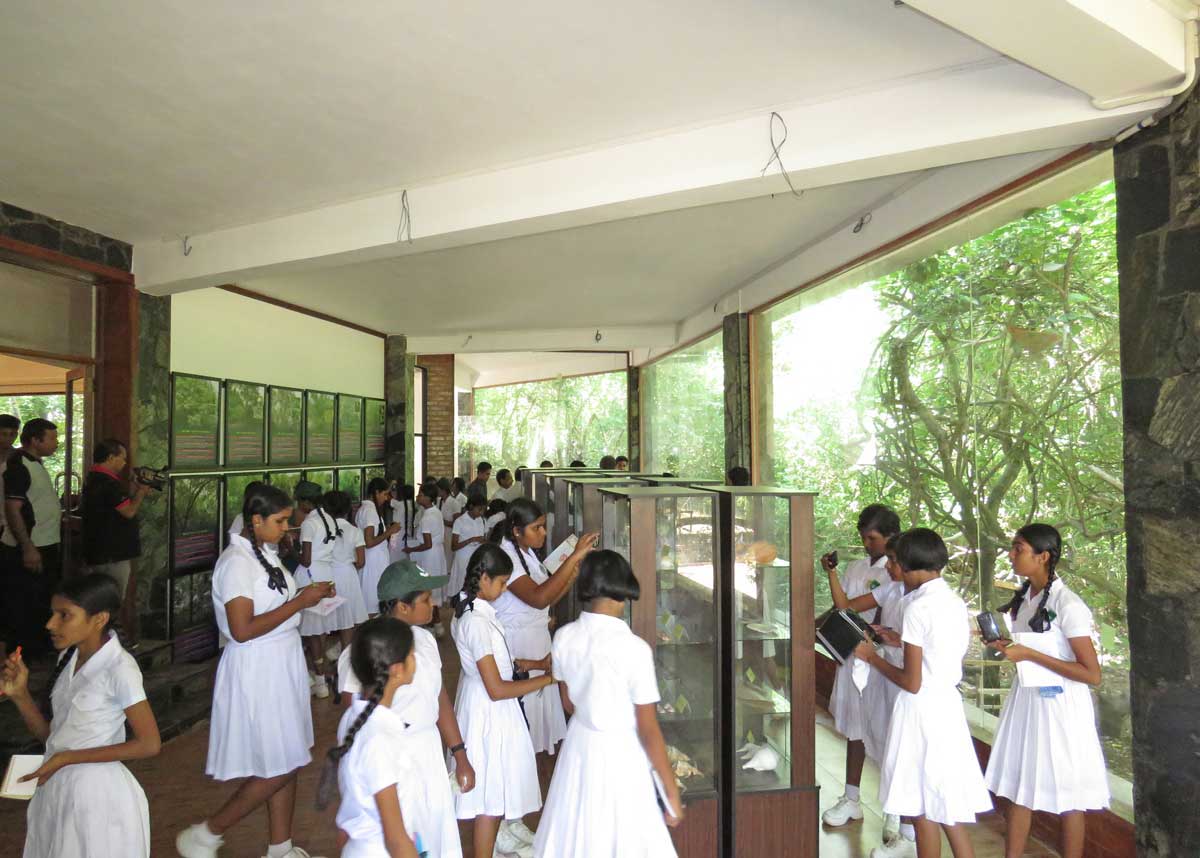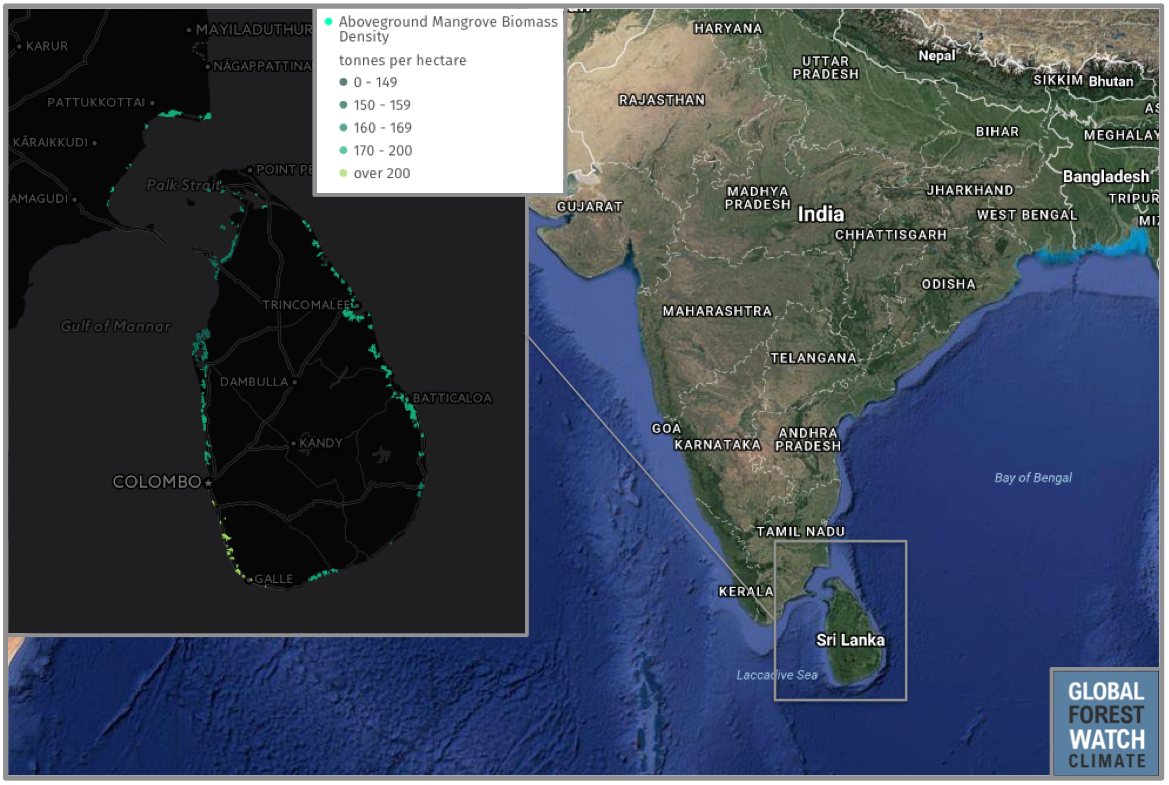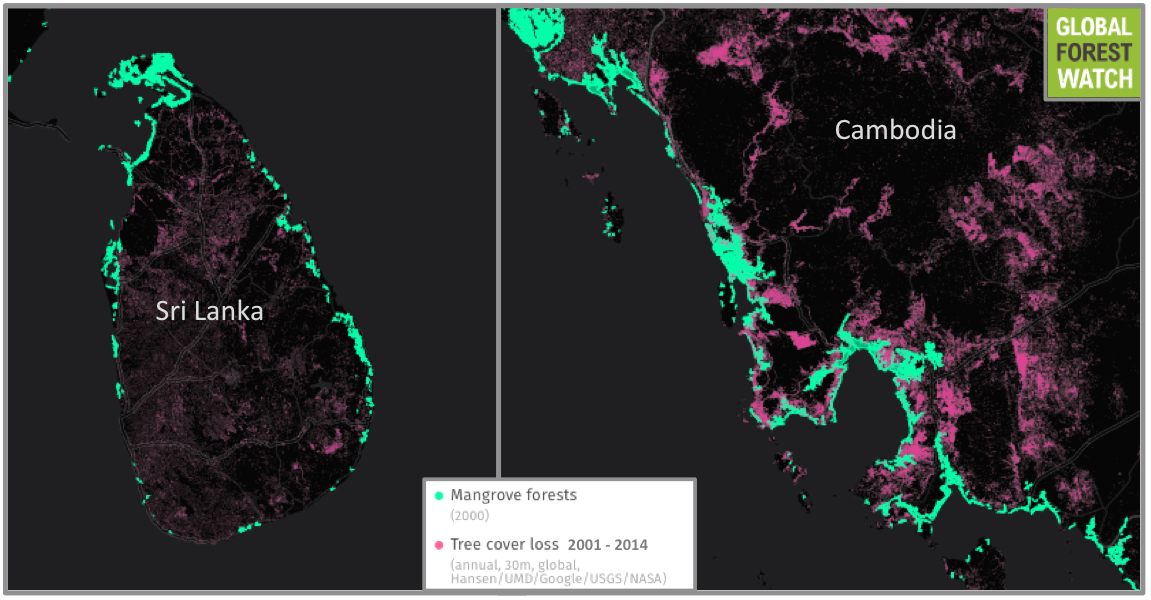- Mangroves provide many ecosystem services, from protecting shorelines and serving as nurseries for fishes and crustaceans to sequestering carbon.
- Mangroves are one of the most threatened tropical ecosystems on the planet, declining by more than 50 percent in as many years.
- Major drivers of mangrove deforestation include conversion for agricultural purposes, dam-building, and firewood collection. Scientists believe rising sea levels from global warming will be a big future threat.
- Sri Lanka’s new museum is part of a project launched last year that aims to protect the country’s 8,800 hectares of mangrove forests and restore 3,900 hectares. The museum seeks to attract more than 20,000 visitors in its first year.
This World Mangrove Day, the tropical island-nation of Sri Lanka is getting its own mangrove museum. The museum, inaugurated by the Sri Lankan president Maithripala Sirisena today, will showcase how mangroves – saltwater-adapted forests found along coastal areas – contribute to ecosystems and livelihoods in the region.
Tucked away in a shaded spot at the edge of a mangrove forest on the western coast of the country, the museum seeks to attract more than 20,000 schoolchildren and eco-tourists in its first year.
“Mangroves swiftly absorb carbon dioxide and inject oxygen into the atmosphere, maintaining an ecological balance vital for the environment,” Prime Minister Ranil Wickremesinghe said in a statement. “It is my belief that the mangrove restoration project will generate much-needed awareness among key stakeholders such as the community, leisure sector personnel, tourists, and the general public.”


The museum is part of a nationwide project launched last year, funded by Seacology, a U.S. based island conservation organization, and executed by Sudeesa, a local NGO, earlier known as Small Fishers Federation of Sri Lanka.
The five-year project, which will cost $3.4 million, aims to protect Sri Lanka’s existing 8,800 hectares (34 square miles) of mangrove forests and to restore 3,900 hectares (15 square miles). Raising awareness of the value of mangroves is crucial, say those involved, since the project relies on local communities to protect mangroves by helping them adopt alternative livelihoods that don’t involve destroying mangrove forests.
Referred to as “magical” by Mary Randolph, a program manager at Seacology, mangroves play a role in many critical ecosystem services from protecting shorelines and serving as nurseries for fishes and crustaceans to sequestering carbon more efficiently than other types of forests.
According to Seacology, over half of the world’s mangroves – one of the planet’s most endangered tropical ecosystems – were lost to human disturbance in the past 50 years. Current global threats include the conversion of mangroves for aqua- and agriculture, damming rivers that supply fresh water and sediment to the trees, and rising seas fueled by global warming.
Sri Lanka has also seen its mangroves disappear, but accurate estimates for the rate of loss are difficult to find because little information exists about the country’s historical extent of mangrove cover. However, satellite data indicate Sri Lanka’s mangroves have experienced less recent degradation compared to many other countries.


One of the first steps taken by the Sri Lankan government as part of this newest initiative was to survey and identify the country’s mangrove forests.
“The government of Sri Lanka has for the first time legally demarcated about 50 percent of all its mangrove forests [as protected areas],” Duane Silverstein, Executive Director of Seacology, told Mongabay. Sri Lanka has committed to protect all its mangroves going forward, the first and only country to do so.
Tundi Agardy, who heads the Marine Ecosystem Services Program at the NGO Forest Trends, attributed the thrust towards legal protection to the realization that mangroves act as shoreline protection. The importance of mangroves as natural buffers was driven home during the devastating tsunami that struck Sri Lanka in 2004 killing more than 30,000 people. A report by the International Union for Conservation of Nature (IUCN) the following year assessed the impact on two coastal villages and found that there were two fatalities in the village that had a thick mangrove and scrub forest, while the other village that did not have such vegetation suffered almost 6,000 deaths.
“We can let the mangroves die or be cut off and put in place built structures to protect the shorelines,” Agardy said in an interview “It is just much more cost efficient to let nature do this for us.”
The breadth of Sri Lanka’s mangrove protection laws makes them different from the country’s other conservation laws.
“These laws are very unique because they single out not just an ecosystem or a geographic area like a coastal zone but they’re talking very specifically about a suite of plant species that need to be protected,” she noted.
Mangroves are mostly concentrated in the tropical and subtropical belts and are adapted to survive in harsh conditions like high salinity, low oxygen, strong winds, and high light intensity. However, anthropogenic influences have proven harder to survive.

“The biggest threats to mangroves in Sri Lanka include prawn farms, which have been greatly curtailed in recent years, collateral damage from the civil war, and impoverished people cutting down mangroves to use or sell as charcoal,” Silverstein said.
The new museum features installations showcasing the 22 species of mangrove trees found in Sri Lanka, as well as the fish and other wildlife that depend on mangrove-dominated ecosystems.
“It is a public recognition of the importance of mangroves, and educating people about how the economy and culture of this place depends so much on this ecosystem,” said Seacology’s Mary Randolph.
Recent interest in mangroves has been spurred by the discovery that mangrove forests are among the most carbon-rich habitats on earth. According to some estimates, mangroves fix three to five times more carbon than other forest types.
“They sequester carbon in the wood in the trunks and branches of the tree but the really big carbon sink is below ground and is formed by the roots of the mangroves,” said Karen L. McKee, a plant ecologist who specializes in wetland ecology. She added “when they die they do not decay quickly because the flooding retards the rate of decay of organic matter.” Mangroves produce biomass at a very rapid rate and combined with the slow decay, this leads to faster carbon accumulation.
While carbon sequestration and potential economic benefits from it have attracted some stakeholders, McKee told Mongabay that it would be a mistake to focus on just this one function. “We should not lose sight of the range of services that they provide.”
Citations:
- Giri C, Ochieng E, Tieszen LL, Zhu Z, Singh A, Loveland T, Masek J, Duke N (2011). Status and distribution of mangrove forests of the world using earth observation satellite data (version 1.3, updated by UNEP-WCMC). Global Ecology and Biogeography 20: 154-159. doi: 10.1111/j.1466-8238.2010.00584.x . Data URL: http://data.unep-wcmc.org/datasets/4
- Hutchison J, Manica A, Swetnam R, Balmford A, Spalding M (2014) Predicting global patterns in mangrove forest biomass. Conservation Letters 7(3): 233–240. doi: http://dx.doi.org/10.1111/conl.12060; Data URL: http://data.unepwcmc.org/datasets/39. Accessed through Global Forest Watch on [date]. www.globalforestwatch.org














